Review GSM phone Motorola SLVR L7
Motorola SLVR L7. Live pictures
Delivery kit:
- Handset
- 820 mA battery
- Manual
- Charger
- 64 MB memory card
- Wire stereo headset (not for all countries)
- CD with Mobile Phone Tools (not for all countries)
- CD with extra content (not for all countries)
Just at the last moment the company of Motorola renamed its fashion line phones and assigned an L index to them (see details on this point in the review of L2/L6). For now, the top model is the L7 aka SLVR (coming from "sliver"). The device is interesting for its size being thinner than Motorola RAZR V3 and slightly larger (113.5x49x11.5 mm against 98x5313.9 for the RAZR). During the development of the Blade family, this device got a poetical name of Royal Blade, which was to stress the role of the phone and position in the line. But do not think the company decided on making it expensive from the very beginning, a traditional candy bar form-factor and the same feature set as in Motorola RAZR V3 (except for memory card support) couldn't form an extremely expensive product. The company representatives think the SLVR is the device for people who didn't have time to buy RAZR for some reason. As a bonus besides low price additional functionality as memory cards is provided.




First the device will be launched as a single color solution, it will be in October, and Russia is the first country for the launch. It's rather hard to call the color black; it seems like a tint with come ink colour. Its keypad with bronze tints adds extravagance changing the whole appearance of the phone. The keypad is in the RAZR style - metallic (such keypads are possible with etching of metallic planes). In contrast to the primordial idea the developers added a protective covering of transparent plastic thus adding to the mechanic durability of the construction. As for the company engineers the problems with the keys are minimal possible unlike the RAZR.
The keys are backlit in a bright blue, which is stylish and functional at the same time. All the characters are easy to read in various conditions. The Russian version of the device allows two levels of characters on each button (Cyrillic and Latin).



Due to the body thickness, the device looks very stylishly and unordinary. Unfortunately, despite the surface is dull fingerprints stay on it. The device is very easily soiled. That mainly concerns the current colour solution, and others show fingerprints not as much.
Only sides are made of metal and the back is of anodized aluminum. Other parts are plastic though no such feeling appears when holding the device in your hands. A great achievement is the weight forming 85 grams (the RAZR weighs 95 grams, which is due to another screen and the form-factor).

In the middle of the first quarter two more colours will appear (one will be shipped to Russia as well, but most evident in the beginning of the summer). Still the final colours are not defined, and possibly one will be carmine-red and another one "silvery hoar-frost" (stale colour with grey tint, very stylish). If necessary, the company can create a wide colour palette for the model.
The screen came from the triplets. That is a 262K TFT matrix by Sharp, which proved itself well in the customer's eyes. The resolution is 176x220 pixels (30x38 mm). The screen is similar to Motorola v635. In its class it remains one of the best on the level of Sharp and Samsung. It fades in the sun, though the picture remains readable.
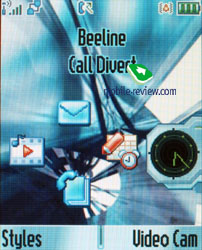
The expansion slot came to the right side and is closed with a rubber shutter closely joining the body. Hot memory card change is supported; the card format is TransFlash (aka microSD). For now the max capacity of such cards reaches 512 MB, though up to 2 GB are announced. A blue line is above the slot, it resembles as a card work indicator, but it is not. That is only a decorative element specifying the card position only.

The right side holds a camera button which is also responsible for Push to Talk (if the initial user settings have it on, other wise it won't be seen even in the menu). The phone version for the Russian market where no PTT service is available holds no predefined settings; the configuration may be specified later by you. There is a miniUSB slot at the same side; it serves for connecting a charger, a headset and a synchronization cable.

A coupled volume button is on the left-side surface, it allows changing profiles in the standby mode also. A little below, there is a Smart button changing its function depending on the menu item. In some software versions you can assign to it activations of voice tags or the start of the Dictaphone work.
A company feature is placing a lighting indicator on top. The keypad backlighting turns on or not depending on the illumination level. A strap hole is just near.
A VGA camera objective completely coinciding with the one in other models is on the back.

Removing the back cover, you uncover a 820 mAh Li-Ion battery. The manufacturer claims it is capable of up to 140 hours in the standby model and up to 4 hours in the talk one. Averagely in Moscow networks the device worked for 3 days in case of one hour of talks and up to 20 minutes of using other functions. So, we think the average battery life is about 2-3 days. The battery is fully recharged in less than 2 hours. One day of battery life is achieved at the whole day listening to the mp3 player (4-6 hours of music and up to an hour of talks).

Menu
This L7 is a technological copy of Motorola v360 in another form-factor. The flex version and functionality completely coincide in both phones. The difference is the L7 possesses an automatic key lock which is caused by the form-factor.
The dynamical memory capacity of 11 MB (it depends on the preinstalled software, at least 6.5 MB of free memory). You can access the Main Menu by pressing the Menu key (or an Ok button as a variant) that is located under the screen right in the middle. The main menu is traditionally represented as 9 icons; each of them uses information bar for definitions. You can switch the appearance of the main menu to the list mode. Then everything will be represented as lists. Half of the submenus is represented as lists and half as icons (if you choose a corresponding menu appearance). A user may customize the order of the icons in the main menu (or the items in list view mode). The menu does not support fast number navigation, but you can setup shortcuts for almost every menu item or function. Two soft-keys can be bind to various actions as well, apart from the default ones. With such menu personalization flexibility the lack of the fast number navigation is not so noticeable.

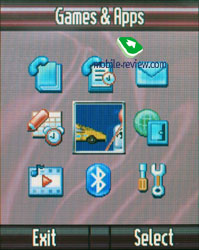

The device supports predictive text input iTap. The current word is shown while input (in the lower service line) and variants of a word to select. When the dictionary is off, all the characters assigned to the button are shown. The device remembers the variants of the words you choose and after that offers them automatically. That helps to avoid entering words into the dictionary as it is necessary in T9.
In case you use two input languages for your SMS or letters - you can choose the language from the special menu, or use a fast one touch switch. You can also setup which type of text input to use for every Language - predictive or not. An interesting solution that allows setting up your mobile even more customized. However, I would like to notice that the text input is related to the users and only a small amount of them use more than two languages.
Working with memory card should be mentioned specially. When plugged in, the card is defined automatically. The device supports a special folder structure, and that's why you can create subfolders only in some folders, otherwise you take a risk of seeing no necessary data after. Each phone menu (pictures, sounds, and video) allows selecting a carrier, which is s memory type to display. Both memory types are not supported at the same time. At the same time any file can be copied from one memory type to another. Generally, working with memory cards is middling though enough for an unpretentious user.
Phonebook. Pressing the buttons in the standby mode calls a search menu, here you can search by unlimited number of letters. Traditionally provided fast switch to a name by the position in the phone book.



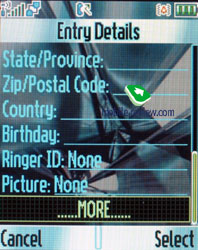
Up to 1000 entries may be saved in the phone book; a name goes with one number, e-mail address, personal photos and call melody. New fields are called Nickname (used in ICQ and similar programs and has no any straight use here), fields for entering a post address (two fields for a street, fields for a city, state, post index and a country), birthday (but there is no a memo here still).
Only one number can be assigned to each. At the same time setting another order of entry representation in the phone book menu changes the phone book greatly. All the entries for a name are hidden behind the name in the general list. You are not limited in the number of fields and can keep several phone numbers, e-mail addresses. The matter is the representation you have chosen. The plus of the notion is you can select personal call and a picture that will be displayed during a call for each entry (for instance, one user but different numbers). In the general list each name with several numbers may be scrolled with horizontal pressures, icons signifying the type of the number will be changing. There are several users' groups the entries may be distributed among.
However I have noticed a small disadvantage - when you are deleting an entry from the phone book, you will have to delete each number assigned to it separately. It's impossible to delete them at once.
You are free to choose the style of displaying entries in the phone book: either names with assigned images, or only names, you can also personalize the entry sorting style (quick dial number, name, e-mail address). Voice dialing can be setup as well; it works fine in various conditions.
The phone book is interesting in characteristics and no similar offers by other manufacturers exist now, all of them have restrictions (one photo for a total name, no photo assigned to separate names, the same for personal melodies). At the same time, the phone book cant' be called ideal in the absence of many fields and it needs investigating the structure.
Messages. The default memory capacity for 100 SMS is provided; it may also vary depending on the software version. As a rule, operator versions are limited by 40 messages. The device works with EMS. Automatic cleaning of the whole message list should be mentioned as an extra possibility; there is a list of templates. Delivery report may be on permanently or switched on/off for a message.

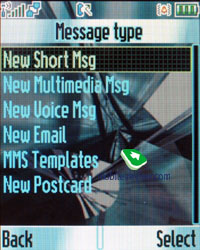
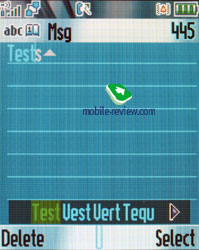
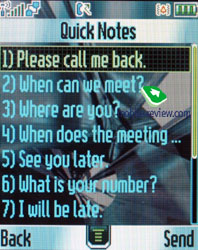
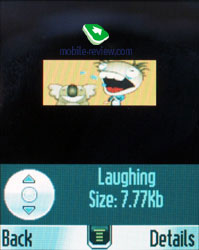

The phone book list appears when sending a message, which is a difference from the previous models. At that you can tip several names and thus send a group message. And now starting with this model the function gets standard for all the Motorola's phones.
Working with MMS doesn't bring any inconvenience; everything is simple and easily understandable. The messages can be attached with pictures made by the built-in camera, sound files. The ten predefined templates are really great, be sure to check them out.
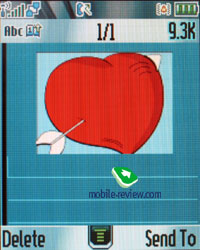
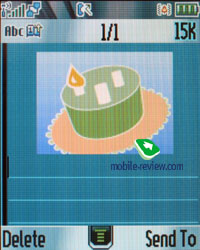
The phone has POP3/IMAP4 e-mail client, it allows watching the headers of the incoming mail and download their body as well. Only graphical files that do not exceed a certain size limit can be sent. In case you want to store some of the e-mails, you will have to use the dynamically spread memory, just like in case with MMS.
WAP. The phone has WAP-browser v2.0 and its possibilities are standard so nothing special can be said. GPRS (class 10) is present, the settings are rather simple, just follow your operator's instructions.

Call log. The phone has a list of received calls; it includes the missed ones as well, they may be distinguished by the absent tip. You can also see the list of the 10 last dialed numbers; you can access it by pressing the Call button. Everything is rather simple and traditional, nothing special at all. Each entry features the date and time as well as the duration.
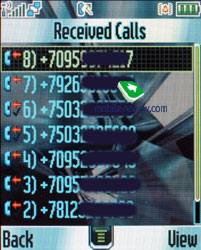

Also this menu shows battery life, last calls, call duration and data connections.
Office applications. This menu features a whole bunch of office applications such as the Calculator. It's convenient, the full digital keyboard is present on the screen, it reproduces the real keyboard perfectly. The menu features memory options and the unit converter.
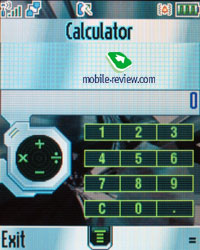

Shortcuts are located in the same menu. You can create shortcuts not only for various menu sections, but for a definite wap-site as well.
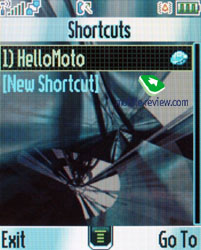
Alarm clock. You can create several alarm clocks and choose a custom ring tone, name and volume, type of reoccurrence (daily, single time) for each of them. This phone was designed for continuous, that's why entering names and titles for the alarm clocks is required. Alarm clocks are activated in one touch, and a note really eases work with them.
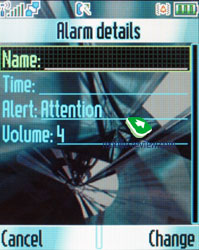
Dictaphone. You can create records from the stand by mode as well as during the talk. Dictaphone can record the whole dialogue. The maximum length for each entry - 60 seconds, however your interlocutor will hear the sounds (at first it's zoommer, followed by short beeps with a continuous interval). There is no possibility to keep more comments despite the dynamical memory present, only several records up to 60 seconds in duration (earlier the limit formed 120 seconds). The dictaphone is weak especially against a background of the rivals recording up to an hour of talks. In the listening mode a percent of the total time but not a reproduced time is shown, the discontinuity forms 5. That looks hardly comfortable since we all are used to representing record time and that seems logical.
Organizer. You can view it monthly or weekly with breakdown for hours. You will see your appointments bind to a certain time of the day, it's convenient. Each entry can be assigned with a name, start time, length (measured in hours, the minimal amount of time - 30 minutes). Warning can be set in advance. Each entry can be reoccurred, this is a big plus.

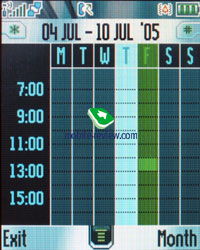
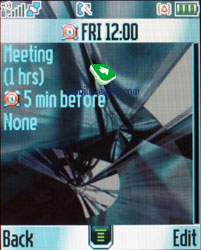

SyncML support is present, it's made for corporative users who are in great need of synchronization with data server (something similar to remote synchronization with Desktop PC, but this time the server must be located in the network).
Games and applications. The phone supports Java MIDP 2.0, all applications that are located in this menu item are based on this technology. The number of games and their title depends on where the phone was bought. The most often to find are Rebels (a space shooter) and Crazy (plain Worms, not very interesting).


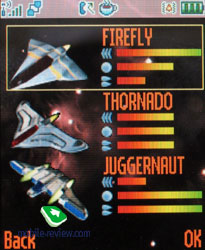
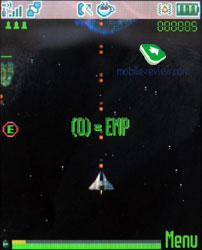
Applications now allow using the Safe program - once you set a password, and then can store confidential data about you bank account, passwords, addresses and so on. It resembles the ones in Sony Ericsson, Nokia, Siemens.
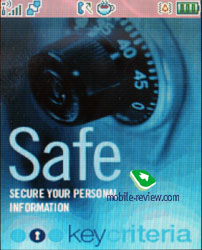

Multimedia. The phone supports themes. It's a set of wallpapers, color schemes for the menu, sounds and ring tone types. You can change the outlook of your phone almost instantly and this is really fun. New themes can be downloaded from Motorola's website.
The themes haven't changed; there are three of them - a standard, Techno, Scarlet. They not only change a colour menu representation but interface windows, the whole interface of the phone changes.



MotoMixer - original sound file editor that allows mixing the tracks. You can play with it from time to time; the results may come out rather unexpected and nice. However as the practice shows, these sound editors are nothing more than a toy for most of the users, only few of them take this tool seriously.
Sounds - information about all sound files located in the phone's memory is stored here. You can check out their size, info and even listen to them. The players is similar to other Motorola's phones, everything is clear and easy to understand. The great advantage of this very player is playing back in background. You can form you own play lists by the way.
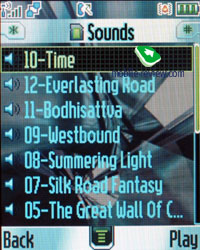
Pictures - list of all images located in the phone's memory. There's a special icon near the file name. Each picture can be set as the wallpaper or screensaver. Pictures can be sorted in categories; this will make the browsing easier. A special editor is present as well, it allows putting frames, changing color scheme and using special effects. The most convenient part is that after mocking the picture it can be stored with a new name. This means that both the original and the new picture will be available for use. This may come handy in case if you want to edit the photo, and not to ruin the original.



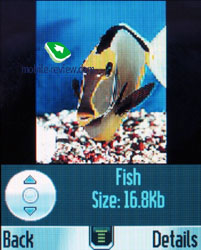
Settings. Here you can setup all Display settings including the color schemes.
Ring tone type and notification mode (mixed mode, when the vibrating alert works at the same time with the ring tone is present) is here as well.


Network settings and security ones won't be highlighted, everything is plain and clear there.
Bluetooth settings are former, the device is seen only for 60 seconds, which is not enough sometimes. Now the Print option is available, printing is possible for a message, an organizer note or a phonebook entry. The supported standard is 1.2, though no other changes were made except for the Print profile. Unfortunately, the device supports no Audio Profile, which prevents from using stereo headset with it.

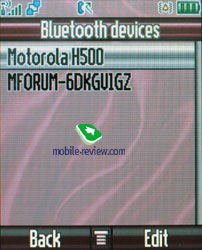
Camera. The device is equipped with a VGA-camera, which is a typical solution well known by all the triplets, no flash as well as any peculiarities. The camera is quite enough to take photos of people and use the photos in the phone book.
The camera allows not only taking photos but also recording video (3GP). The record may be called from the multimedia menu and then video. The duration of a record may be limited for a MMS or maximum (about 30 seconds). Two resolutions are supported 128x96 pixels and 176x144 pixels. Voice recording may be turned off. The quality of the video is average and the artifacts are seen on the screen. That was hard to expect the device will show any eminent features in recording video and it is typical and doesn't differ from other models. The time that saving the video takes almost equals that necessary for recording and that is a disadvantage.
 
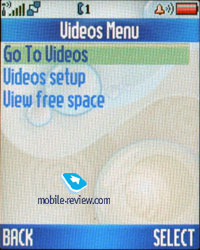 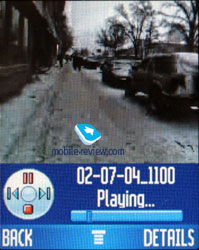
Synchronization with PC. A complete version of Mobile Phone Tools version 3 is included into the package. The program possibilities cover the needs of the majority of users; they include synchronization with MS Outlook, making reserve copies on the PC, copying photos, melodies, writing messages on the PC.
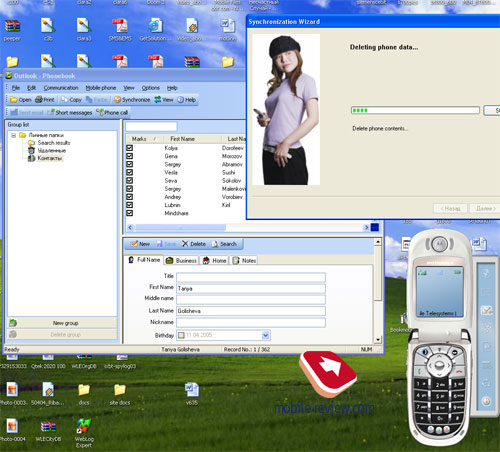
Impressions
The model has no problems with the connection quality being a typical modern device. Musical component is on the triplet's level, mp3 play back is present and limitations are not as strict. Signal volume is higher than average, Midi-files are played in the 24-tones polyphony that sound well also. The vibra is average or a bit more powerful. The loudspeaker volume is enough during a conversation almost always.
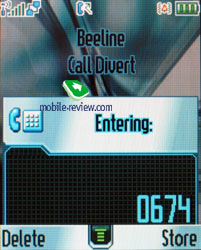
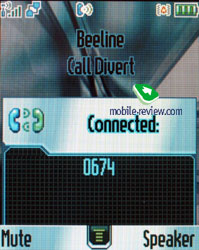

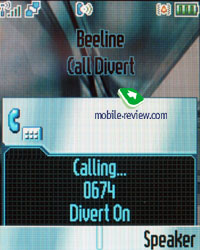
The phone is positioned as the solution for those who had no time to buy Motorola RAZR V3. As for me, the audiences do not intersect at all due to the price positioning. Judging by the preliminary wholesale price we can suppose the retail one will be about 275-300 USD. Not more. Really, this low price is dictated by a poor delivery set for the Russian market. The kits for other countries include a miniUSB cable, a wire stereo headset, CD with a complete version of Mobile Phone Tools, extra disk with content. And none of them is included into the Russian version. The distributors decided that users will surely download the software from the network, and buying a 3USD cable and a 5USD headset will make no trouble. Economized 30 - 45 USD in this case will please users, no doubts.
In the beginning of the sales, the L7 won't be equipped with EDGE (which is standard for the latest models). Starting with December, it will gain EDGE support and will be delivered to some markets in this condition. At the same time, in Russia such model can be expected not earlier than in February or next March.
As for the fashion component, the SLVR has no rivals at all. The size and the quality а the material are out of competition. The functionality competes with such solutions as Samsung X700 and Siemens CX75. This model loses to Samsung in the camera quality, its resolution, the package (though, the Samsung's kit includes no memory card). At the same time voice tags and a dictaphone working during a conversation are evident advantages of the L7 (Siemens has nothing of the mentioned above). Samsung X700 is the most possible rival of the SLVR, that is mainly due to an active promotion and popularity of Samsung D500 (people see its successor in the X700). At the same time Motorola SLVR L7 settles a new standard for the middle class, which integrates both functionality and design. Judging the first price of the SLVR, we can surely say a new bestseller by Motorola appears on the market.
Eldar Murtazin (eldar@mobile-review.com)
Translated by Maria Mitina (maria.mitina@mobile-review.com)
Published — 14 September 2005
Have something to add?! Write us... eldar@mobile-review.com
|
































































